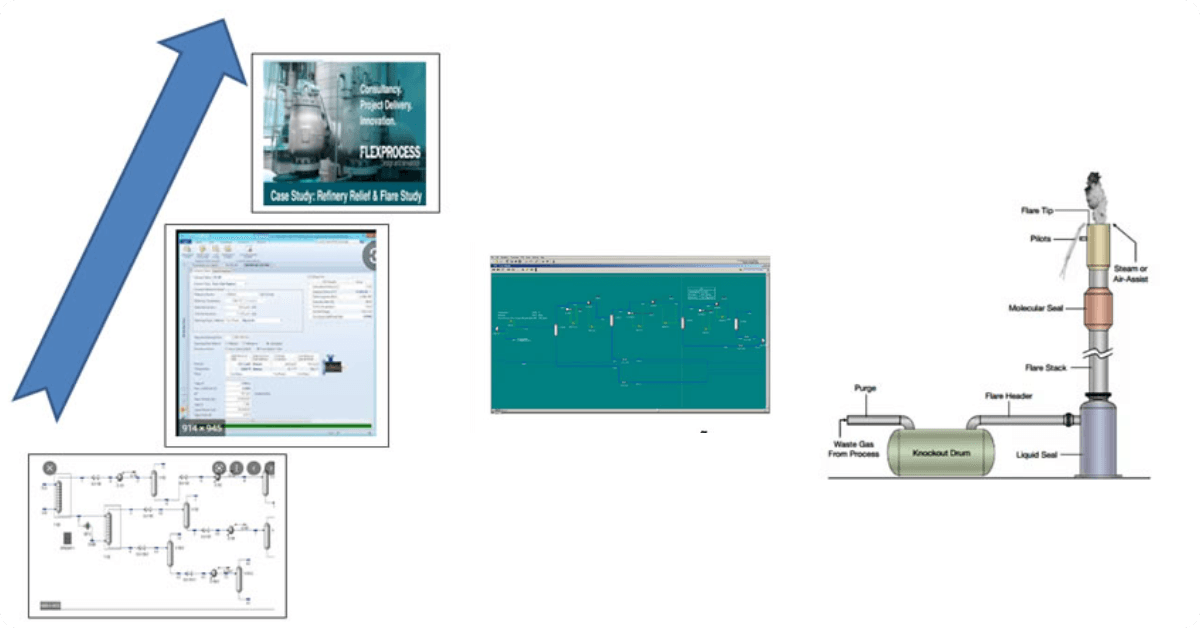
Relief and Flare System Assessment
A well designed relief system may protect the equipment, process system and the operating plant during any catastrophic event. However, it is essential to have proper experience and knowledge to design an adequate relief system.
Engimates team members previous work experiences possess excellent knowledge of ANSI/API/ISO standards, Client design engineering practices, Specific refinery guidelines and expertise in using PSPPM, Aspentech Safety Analysis, and spreadsheets tools. This brings uniqueness to EngiMates relief system design and analysis services.
We provide following services for Relief System (PSV) Analysis
Process simulation modeling at normal operating plant conditions and relief conditions for fractionators / column system, heat exchangers, compressors, turbines, vessels etc. in Aspentech HYSYS, Aspen Plus and Honeywell UNISIM.
Adequacy check of refinery relief & flare systems based on the refinery specific guidelines, OSHA, API-520/521/2000 standards using client proprietary software or EngiMates validated Excel Spreadsheet Tools.
Develop mitigation options for inadequate relief devices, high inlet & outlet pressure drop concerns and other concerns.
Developed project report / discussion list for the concerns identified & their mitigations.

